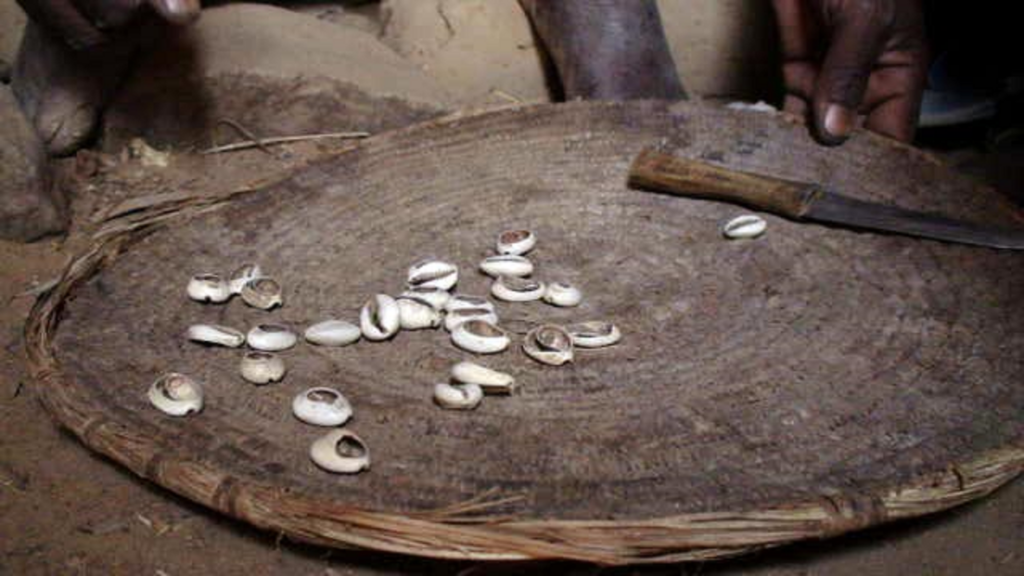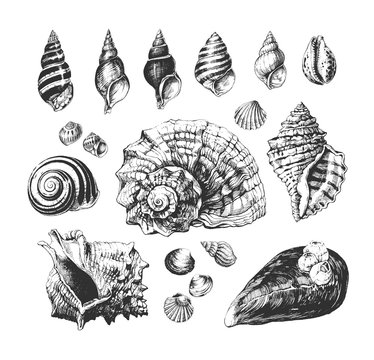In recent times, cowries have been used as necklaces and bracelets, and they have been seen in films or used by priests in displaying their consultations Orunmila. These days, the quality of cowries is underrated as a result of a lack of sustainability on the part of the cultural ambassadors.
A cowry, known to the West Africans, especially in the Yoruba language phrase “owo eyo”, was one of the world’s most popular and widely used kinds of payment. The modest shell, on the other hand, found its way into West Africa’s cultural fabric, taking on a deeper symbolic and ritualistic meaning that has never been completely lost.
Nigerians born in the earliest centuries are conversant with the value of cowries, which at the time served as a means of exchange. The elegant white shell has all of the features required of money: light weight, non-perishable, and suitable for both modest and large expenditures. It is instantly recognizable and difficult to fabricate because of its form. Cowries also have little variety in size and shape, making them simple to count.

In the 20th century, the currency was seen as a symbol of wealth and power, because at the time, it was more than the money we spend in the 21st century. Also, cowrie shells symbolized trade power. This is because the currency allowed the Europeans to enter the lucrative African trading markets of the 16th century when they bought commodities, like people, with shells.
To make larger quantities, cowries were frequently woven into bracelets or long strings of forty, or put inside pouches. The shells might be placed into baskets and weighed to estimate their value for significant payments. For instance, 40 cowries made 1 string, 50 strings made 1 head, which is about 2,000 cowries total, while 10 heads made 1 bag, which is about 20,000 cowries total.

What then is the history of cowries and what are they made of?
Arab trading caravans were likely the first to bring the cowrie shell to West Africa, maybe as early as the eighth century. Shells were used as money during the 15th century, particularly in the Mali Empire. However, it was only with the Portuguese, French, British, and Dutch that Africa was bombarded with these munitions. Because of certain African tribes’ affection for the shell, the Europeans helped to make them the major currency in the slave, gold, and other products trade.
Cowries are any of numerous marine snails that have their origin in the genus Cypraea, which is the family of Cypraeidae, belonging to the subdivision Prosobranchia (class Gastropoda). The humped, thick shell is attractively colored (sometimes speckled) and glossy, with inrolled and fine-toothed apertural lips that open into the first whorl of the shell.
According to Dutch traders, African merchants in Dahomey, now Benin, who were unaccustomed to paper and writing, were dubious of the European promissory notes, scrutinizing them constantly to ensure that the writing hadn’t vanished, leaving them with worthless pieces of paper. Similarly, European traders were initially hesitant to barter their produced goods for shells until they discovered that cowries were commonly recognized as currency in the region.
The cowrie coexisted with many other types of currency in West Africa for a long time, including silver coins and gold dust, as well as salt bars, brass, and copper rods, horseshoe-shaped manillas, textile currencies, beads, and so on. Moreso, in small villages, the trading system is a compulsory obligation of dwellers to contribute to the economy of their village. Therefore, the elderly used the stored cowries to purchase community essentials such as tools, medicine, and livestock.
History has it that before the advent of cowries, the trading system was a barter system, which implies a sack of peanuts in return for a cooking pot, a hoe in exchange for a lovely basket- in which money was not involved.

The fall of cowries
The African people had an especially difficult time accepting new, more centralized forms of cash. For one reason, West Africans were unconcerned about adding another currency to the mix because they were used to numerous currencies coexisting on the market. When the French banned the use of the shells as currency in 1907, the elders fought back, refusing to include the new money in their hoards or use it in ceremonies in place of the cowrie. Both currencies were preserved by some people. Others simply despised the francs and refused to accept them as currency.
In 1907, the French colony imposed taxes that prohibited the use of cowries. However, the prohibition of cowrie had little effect on changing people’s habits. Sentiment for the cowrie, combined with massive shell inventories in the area and the depreciation of the French franc — while the cowrie held its worth — contributed to West Africans’ reluctance to accept the new currency until the 1940s.
Furthermore, in Africa, the commitment to the cowry and refusal to accept White man’s money was a strategy for maintaining their independence and sovereignty prior to the colonial subjugation. They believed that demonetizing the cowries was a method of cutting them off from a key symbol of their past and culture in favor of the franc, a faceless currency.
Between 1990 and 1991, Cowries are no longer used as cash in West Africa, although their history as a kind of money is preserved. Cowries, either alone or mixed with cash, are still infrequently given as alms to the impoverished in Ouagadougou, Burkina Faso. Also, home dealers specialize in selling ritual offerings such as cowries. Though not commonly used, the small white shells are still used in West Africa to pay for ritual services.





